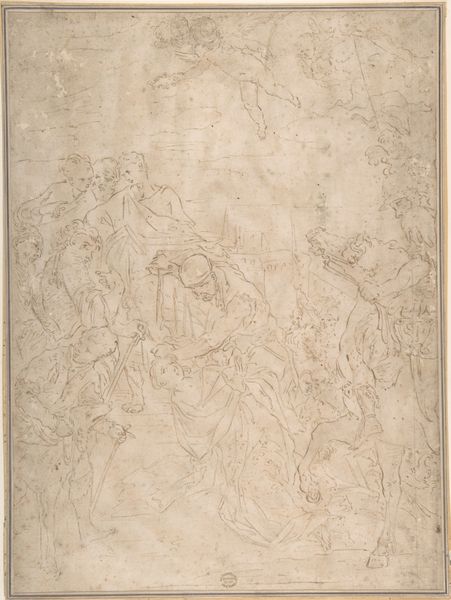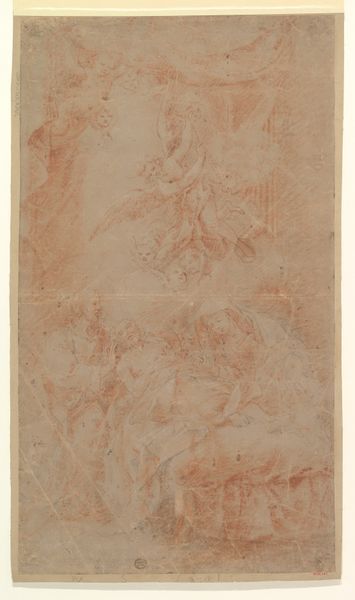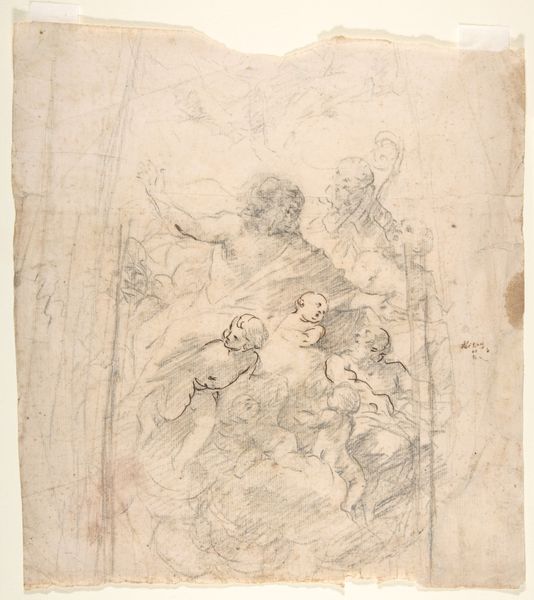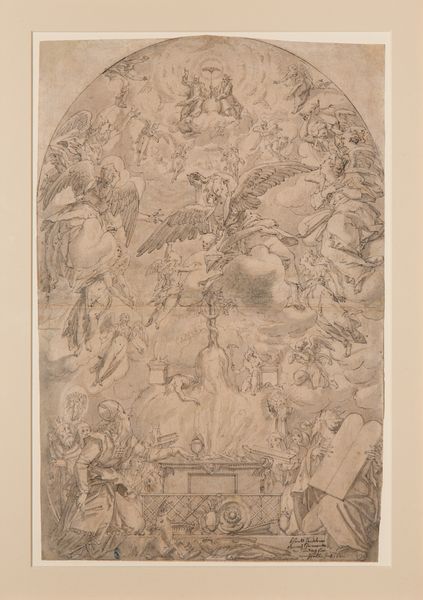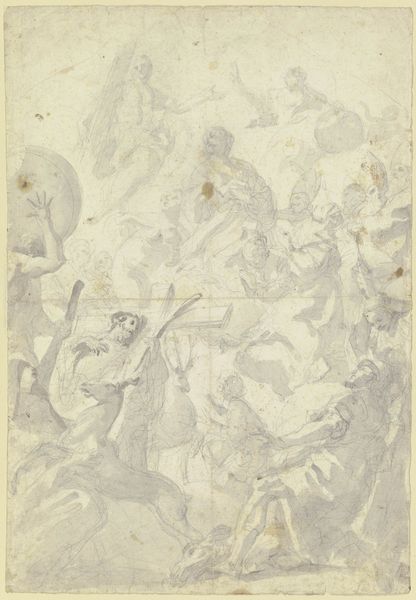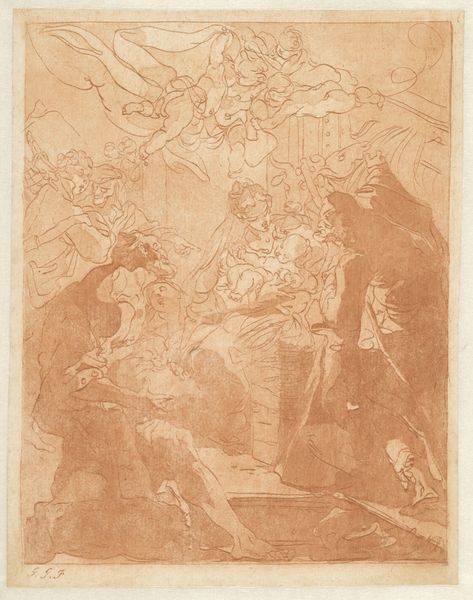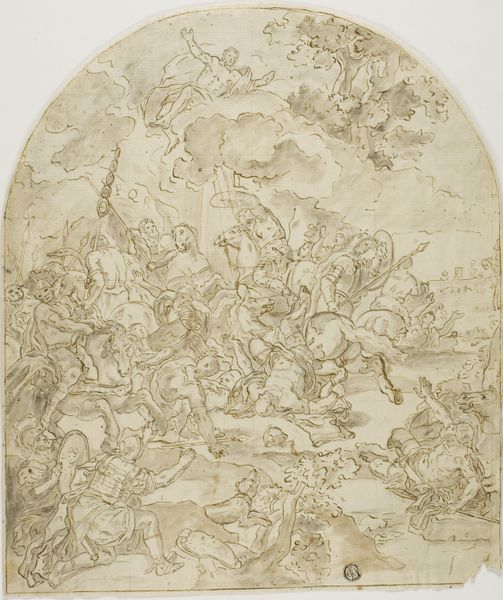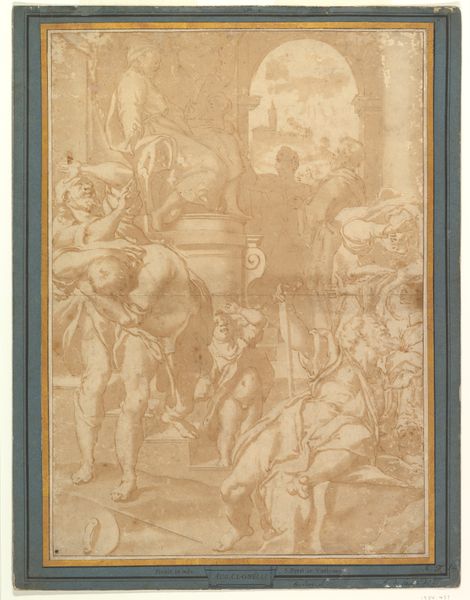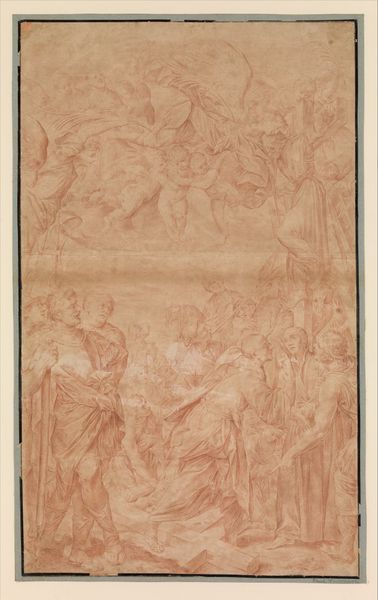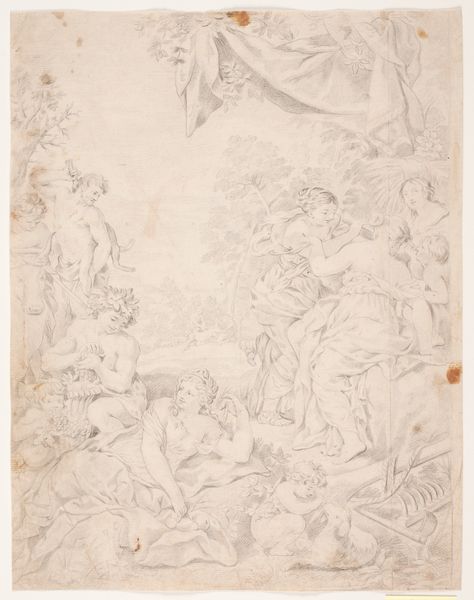
drawing, print
#
drawing
#
baroque
# print
#
death
#
figuration
#
line
#
history-painting
Dimensions: 20-1/16 x 12-5/8 in. (51.0 x 32.0 cm)
Copyright: Public Domain
Curator: This drawing is Ciro Ferri's "The Death of Saint Francis Xavier," created between 1674 and 1679. What are your initial thoughts? Editor: It feels almost ghostly. The composition is dominated by the stark contrast of the dark, earthly figures with the airy angels above. A study in human suffering against divine presence. Curator: As a drawing intended for printmaking, Ferri had to consider how lines translated into reproducible images. The labor-intensive nature of printmaking at the time meant each stroke needed purpose and clarity to ensure effective reproduction and wider circulation of the artwork. Editor: Precisely. Look how the density of lines concentrates the eye. The heavier hatching around Saint Francis and those mourning creates a visual weight, drawing our focus downward, to the material reality of death. And above, the ethereal angels contrast sharply, a fleeting vision barely etched. Curator: And this echoes broader historical conditions, art playing an important role during this period in furthering specific socio-political agendas. Its baroque style emphasizes dramatic emotional impact for its intended audience. Editor: You're right, the overt drama reinforces the narrative, ensuring its message resonated across social strata. I keep being drawn back to the figure on the right, though – the raw emotion. It's fascinating how that level of sentiment is portrayed within this structured composition. Curator: Think of the conditions that influenced its creation. Patronage certainly determined much. An institution of considerable significance, for example, would naturally influence Ferri's style, use of religious motifs, and even production pace. Editor: A vital aspect of its meaning that context. Viewing it today, though, as lines on paper, removed from its original social setting, lets us contemplate the universal theme of mortality—something Ferri powerfully evokes with his skilled arrangement of form and light. Curator: It is a layered work, technically adept, with an understanding of historical context as being necessary for complete comprehension. Editor: Yes, its composition offers a glimpse into both artistic technique and broader human experience, making the experience deeply personal and moving.
Comments
No comments
Be the first to comment and join the conversation on the ultimate creative platform.
